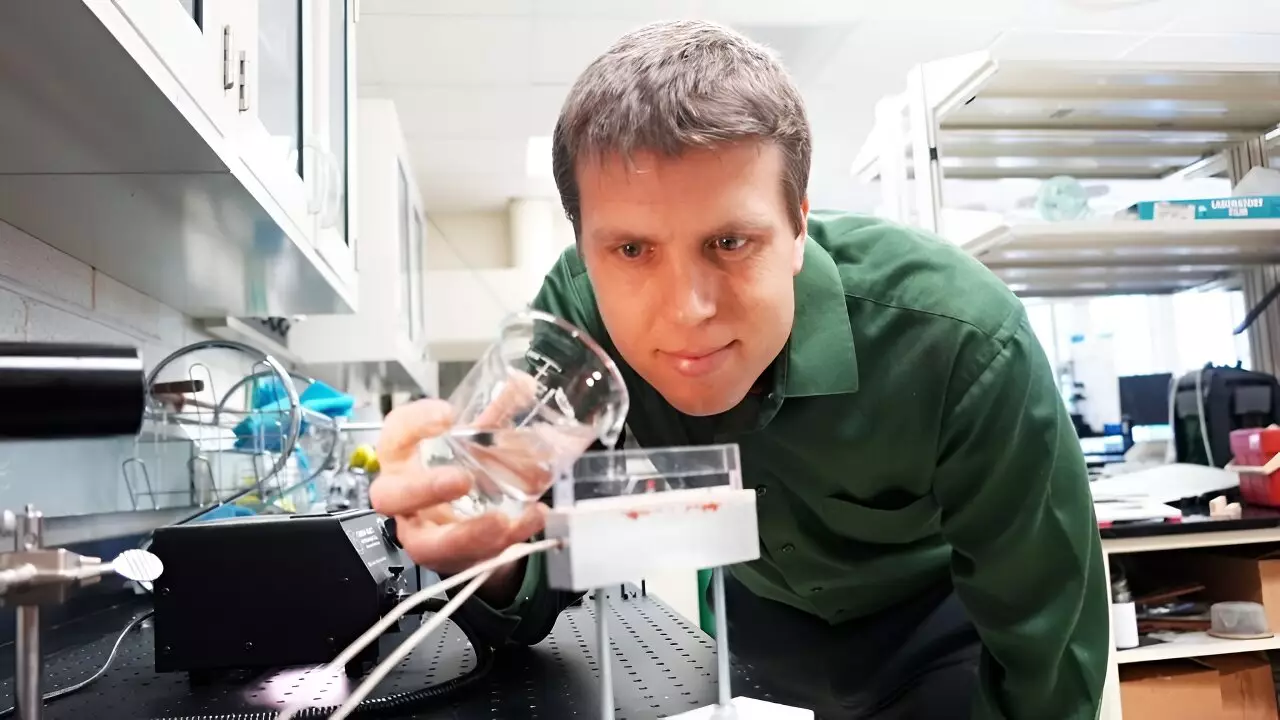When it comes to heat transfer, water has long been the preferred medium due to its abundant availability and high heat capacity. From cooling data centers to powering nuclear plants, the efficient transfer of heat through water is crucial. Recognizing the need for more energy and cost-efficient methods, Jonathan Boreyko, a mechanical engineering professor, has been investigating dynamic phenomena related to water-based heat transfer. His latest research focuses on the use of jumping bubbles during the boiling of water.
Boreyko’s exploration of water’s remarkable behavior began with his discovery of jumping water droplets during his Ph.D. research at Duke University. Years later, one of his graduate students uncovered the phenomenon of jumping ice during his study of frost growth. Intrigued by these findings, Boreyko set out to complete a three-phase “trilogy” of jumping water, incorporating liquid, solid, and now, boiling water.
Graduate student Hyunggon Park played a crucial role in achieving this milestone by creating a micro-structured boiler capable of releasing bubbles at a significantly smaller size. By increasing the number of bubbles while reducing their size, Park and Boreyko were able to enhance the efficiency of heat removal from a surface.
Boiling has long been recognized as one of the most efficient methods to transfer heat through water continuously. In traditional boiling, bubbles rise to the surface due to their buoyancy and release the energy. However, Boreyko and Park’s method challenges this conventional approach.
The team engineered surfaces with an array of micro-cavities that promote the formation and growth of bubbles within them. By placing pairs of cavities close together, neighboring bubbles merge at unusually small sizes, resulting in a strong surface tension force that propels them away from the heated surface. This jumping-bubble effect increases the rate of heat removal as more bubbles continuously depart from the surface.
Additionally, the use of micro-cavities solves a common issue with larger bubbles that can cause a breakdown in heat transfer. At higher temperatures, large bubbles merge together to form a vapor film that insulates the liquid, impeding heat removal. The smaller, microscopically-sized bubbles prevent this film formation, ensuring efficient heat transfer even at elevated temperatures.
The discovery of jumping bubbles opens up possibilities for more effective cooling techniques, particularly in applications such as data centers. In these environments, rapid heat removal from surfaces is crucial to prevent costly downtime. The use of jumping bubbles offers a promising solution that surpasses traditional methods.
Compared to the hydrophobic coatings and fragile nanostructures required for jumping droplets, the hydrophilic nature of the surface used for jumping bubbles allows for the use of uncoated metals. Moreover, the micro-cavities needed for jumping bubbles are larger and more durable, simplifying the manufacturing process and reducing costs.
Boreyko believes that this novel approach to heat transfer will find widespread applications in various industries. By combining the understanding of surface tension dynamics from previous research on jumping droplets with the enhanced heat transfer capabilities of jumping bubbles, new innovations in cooling and heat transfer are on the horizon.
While the study of jumping bubbles represents a significant breakthrough in the field of heat transfer, there is still much to explore. Boreyko and his team plan to conduct further research to measure the improved heat transfer in various conditions and surface geometries. This comprehensive understanding will unlock the full potential of jumping-enhanced boiling and pave the way for future advancements.
Jonathan Boreyko’s research on jumping bubbles during the boiling of water offers a new perspective on heat transfer. By harnessing the unique behavior of bubbles propelled by surface tension, this innovative approach presents opportunities for more efficient cooling and heat removal. With further studies and practical applications, the potential of jumping bubbles in various industries is waiting to be realized.


Leave a Reply